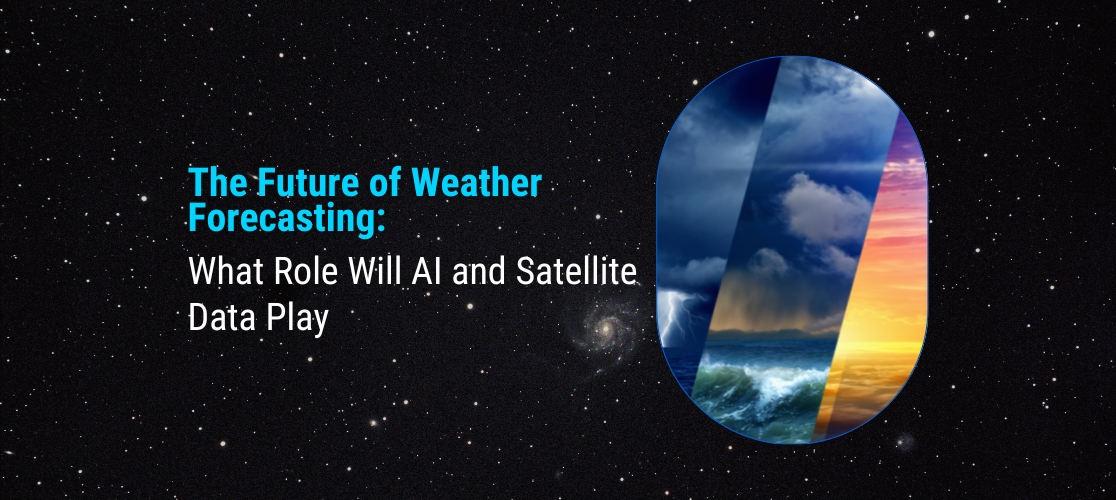14 April 2023
The Future of Weather Forecasting: What Role Will AI and Satellite Data Play.

Weather forecasting has come a long way over the years, thanks to advancements in technology. Today, weather forecasts are more accurate and reliable than ever before, and AI and satellite data are playing an increasingly important role in this process. In this article, we will explore the role that AI and satellite data are playing in weather forecasting.
Improved Accuracy One of the most significant benefits of AI and satellite data in weather forecasting is improved accuracy. By analysing vast amounts of data from satellites and other sources, AI can identify patterns and trends that can be used to make more accurate weather predictions. This information can be used to develop more precise and reliable weather models, which can be used to create more accurate forecasts.
eal-Time Data Another benefit of AI and satellite data in weather forecasting is real-time data. With the help of satellites, meteorologists can get a real-time view of weather conditions around the world. This information can be used to track storms, hurricanes, and other severe weather events, allowing forecasters to issue timely warnings and alerts to the public.
Enhanced Safety The use of AI and satellite data in weather forecasting can also enhance safety. By providing more accurate and timely weather information, meteorologists can help people prepare for severe weather events and take appropriate precautions. This can help to save lives and prevent property damage.
Better Planning AI and satellite data can also be used to help people plan for weather events. For example, businesses can use weather forecasts to plan their operations, such as scheduling deliveries and adjusting production levels. Individuals can also use weather forecasts to plan their activities, such as scheduling outdoor events or travel.
Climate Change AI and satellite data can also be used to study climate change. By analysing data from satellites, meteorologists can track changes in weather patterns and monitor the effects of climate change on the planet. This information can be used to develop more accurate climate models, which can be used to predict future climate patterns and develop strategies to mitigate the effects of climate change.
More Efficient Resource Allocation AI and satellite data can help to allocate resources more efficiently during severe weather events. By tracking weather patterns in real-time, meteorologists can identify areas that are likely to be affected by severe weather events. This information can be used to mobilise resources, such as emergency responders, to areas that are likely to be impacted by the weather.
Increased Preparedness The use of AI and satellite data in weather forecasting can also increase preparedness for severe weather events. By providing more accurate and timely weather information, meteorologists can help people prepare for severe weather events, such as hurricanes and tornadoes. This can include issuing evacuation orders, providing emergency supplies, and establishing emergency shelters.
Better Understanding of the Environment AI and satellite data can also be used to help people better understand the environment. By tracking weather patterns and monitoring changes in the climate, scientists can gain a better understanding of how the environment works. This information can be used to develop more effective strategies for protecting the environment and mitigating the effects of climate change.
In conclusion, AI and satellite data are playing an increasingly important role in weather forecasting. With improved accuracy, real-time data, enhanced safety, better planning, the study of climate change, more efficient resource allocation, increased preparedness, and a better understanding of the environment, the benefits of this technology are clear. As technology continues to evolve, we can expect to see even more significant improvements in weather forecasting, which will help to keep people safe and informed about the weather.
